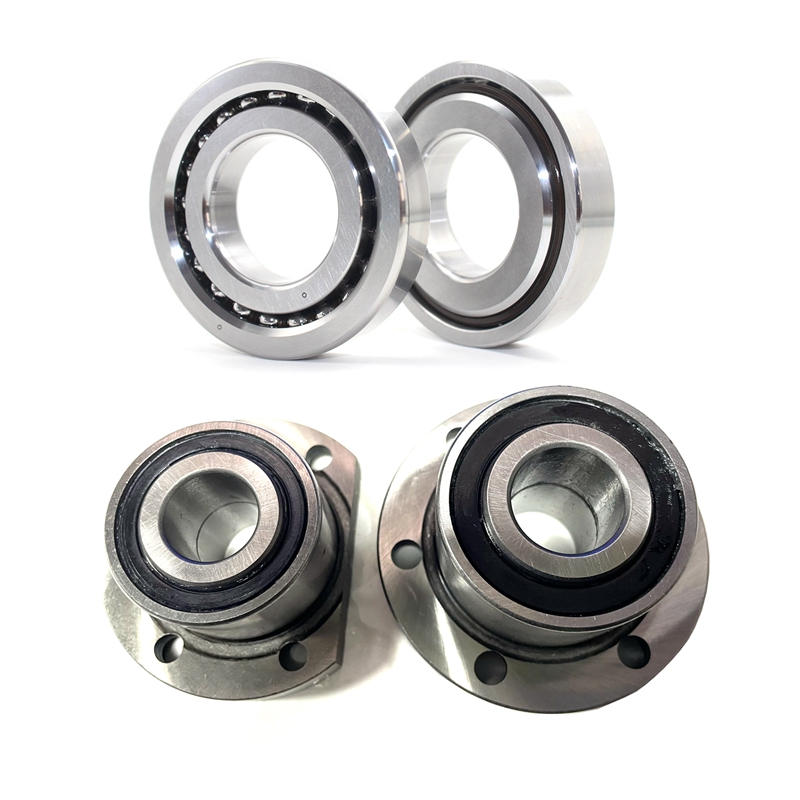Ball Screws Common Faults and Solutions

Ball Screws Brief Introduction:
Ball screws are ideal products to convert rotary motion into linear motion, or convert linear motion into rotary motion.
Because of its small frictional resistance, as a result, ball screws (for example ZKLN 3062.2RS) are widely used in various industrial equipment and precision instruments.
A ball screw contains a screw, a nut, a steel ball, a pre-compression piece, a reverser, and a dustproof device.
Ball Screw Features:
1. Low friction loss and high transmission efficiency
2. High precision
3. High-speed feed and micro feed are possible
4. High axial rigidity
5. It cannot be self-locked and has the reversibility of transmission
Applications:
① For Ultra-high DN value ball bearings, applications are as below:
high-speed machine tools, high-speed integrated machining centers
② For End cover ball bearings, applications are as below:
fast handling systems, general industrial machinery, automated machinery and so on
③ For High-speed ball bearings, applications are as below:
CNC machinery, precision machine tools, industrial machinery, electronic machinery, high-speed machinery
④ For Precision ground ball bearings, applications are as below:
CNC machinery, precision machine tools, industrial machinery, electronic machinery, conveying machinery, aerospace industry, other actuators used in antennas, valve switch devices, etc.
⑤ For Nut rotary (R1) series ball bearings, applications are as below:
semiconductor machinery, industrial robots, woodworking machines, laser processing machines, conveying devices and so on
⑥ For Heavy-duty ball bearings, applications are as below:
all-electric injection molding machines, presses, semiconductor manufacturing equipment, heavy-duty brakes, industrial machinery, forging machinery, etc.
Common Faults and Solutions for Ball Screw:
1. Phenomenon: high roughness value of processed parts
Solution: add lubricating oil to eliminate lubrication failure
2. Phenomenon: the ball screw is partially napped or damaged
Solution: replace or repair the screw
3. Phenomenon: the screw bearing stops work and the movement is not stable
Solution: Replace damaged bearings
4. Phenomenon: the servo motor is not adjusted well, and the gain is too large
Solution: adjust the servo motor control system
5. Phenomenon: large reverse error, unstable machining accuracy
Solution: re-tighten and repeat the test with a dial indicator
6. Phenomenon: the screw shaft slide plate is too tight or too loose with the pressure plate
Solution: re-adjust or study, use 0.03mm ruler to fail as qualified
7. Phenomenon: the screw shaft slide plate is too tight or too loose with the wedge iron
Solution: re-adjust or study to make the contact rate reach more than 70%, and use the 0.03mm ruler
8. Phenomenon: the pre-tightening force of the ball screw is too tight or too loose
Solution: Adjust the pre-tightening force and check the axial movement value, so that the error is not greater than 0.015mm
9. Phenomenon: the end face of the ball screw nut is not perpendicular to the joint surface, and the joint is too loose
Solution: repair, adjust or add pad treatment
10. Phenomenon: the pre-tightening force of the screw support bearing is too tight or too loose
Solution: repair and adjust
11. Phenomenon: large manufacturing error or axial movement of the ball screw
Solution: use the control system to automatically compensate to eliminate the gap, use the instrument to measure and adjust the screw movement
Contact Us:
If you have any questions about Ball Screws Common Faults and Solutions, pls feel free to contact us !

